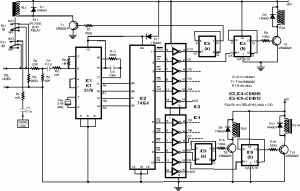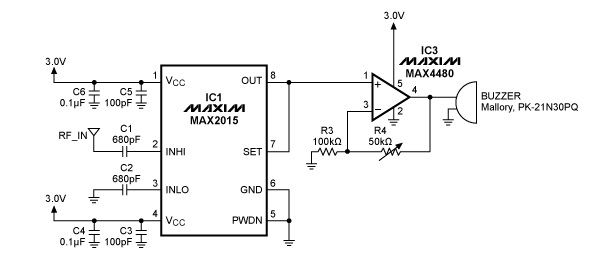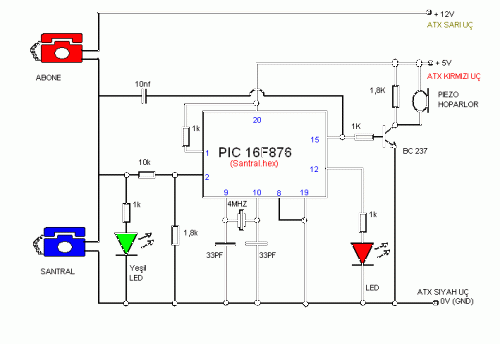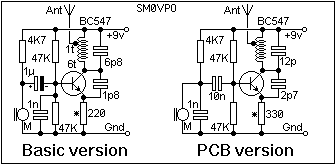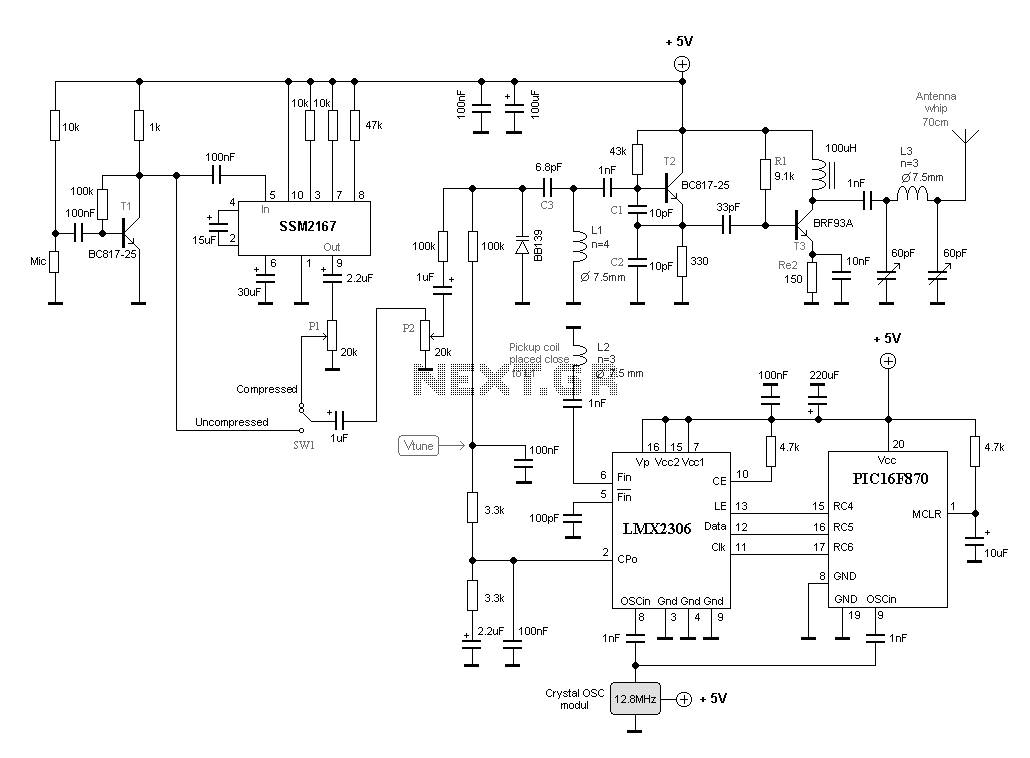
FM Telephone Bug

Here is a simple transmitter that when connected to a phone line, will transmit anything on that line (except the dial tone) to any FM radio. The frequency can be tuned from 88 to about 94 MHz and the range is about 200 feet. It is extremely easy to build and is therefore a good, useful beginner project.
This simple FM transmitter circuit is designed to capture audio signals from a phone line and broadcast them wirelessly to FM radios within a specified range. The circuit operates by utilizing a modulator to encode the audio signal onto a carrier frequency that can be tuned between 88 MHz to 94 MHz, which is the standard FM radio band.
The primary components of the transmitter include an audio input stage, a modulation circuit, an oscillator, and an antenna. The audio input stage connects directly to the phone line, where it picks up the audio signals while filtering out the dial tone. This is typically achieved using capacitors and resistors to ensure that only the desired frequencies are passed through.
The modulation circuit, often realized using a transistor or an operational amplifier, takes the audio signal and modulates it onto a high-frequency carrier wave generated by the oscillator. The oscillator is usually a simple LC circuit or a crystal oscillator that provides a stable frequency output. The modulation process varies the amplitude or frequency of the carrier wave in accordance with the audio signal, effectively embedding the audio information onto the radio frequency.
An important aspect of the design is the antenna, which is responsible for radiating the modulated signal into the surrounding environment. A simple dipole or monopole antenna can be used, and its dimensions should be calculated based on the operating frequency to ensure efficient transmission.
To enhance performance, it may be necessary to include additional components such as a low-pass filter to prevent harmonic distortion and to improve the overall signal quality. Power supply considerations are also crucial; the circuit can be powered using a standard DC power source, ensuring that all components operate within their specified voltage and current ratings.
The resulting transmitter can effectively broadcast audio signals over a distance of approximately 200 feet, making it suitable for various applications, including home audio systems, intercoms, or educational projects for beginners in electronics. Proper care should be taken to comply with local regulations regarding FM transmission to avoid interference with licensed broadcasts.Here is a simple transmitter that when connected to a phone line, will transmit anything on that line (execpt the dial tone) to any FM radio. The frequency can be tuned from 88 to about 94Mhz and the range is about 200 feet. It is extremely easy to build and is therefore a good, useful beginner project. 🔗 External reference
This simple FM transmitter circuit is designed to capture audio signals from a phone line and broadcast them wirelessly to FM radios within a specified range. The circuit operates by utilizing a modulator to encode the audio signal onto a carrier frequency that can be tuned between 88 MHz to 94 MHz, which is the standard FM radio band.
The primary components of the transmitter include an audio input stage, a modulation circuit, an oscillator, and an antenna. The audio input stage connects directly to the phone line, where it picks up the audio signals while filtering out the dial tone. This is typically achieved using capacitors and resistors to ensure that only the desired frequencies are passed through.
The modulation circuit, often realized using a transistor or an operational amplifier, takes the audio signal and modulates it onto a high-frequency carrier wave generated by the oscillator. The oscillator is usually a simple LC circuit or a crystal oscillator that provides a stable frequency output. The modulation process varies the amplitude or frequency of the carrier wave in accordance with the audio signal, effectively embedding the audio information onto the radio frequency.
An important aspect of the design is the antenna, which is responsible for radiating the modulated signal into the surrounding environment. A simple dipole or monopole antenna can be used, and its dimensions should be calculated based on the operating frequency to ensure efficient transmission.
To enhance performance, it may be necessary to include additional components such as a low-pass filter to prevent harmonic distortion and to improve the overall signal quality. Power supply considerations are also crucial; the circuit can be powered using a standard DC power source, ensuring that all components operate within their specified voltage and current ratings.
The resulting transmitter can effectively broadcast audio signals over a distance of approximately 200 feet, making it suitable for various applications, including home audio systems, intercoms, or educational projects for beginners in electronics. Proper care should be taken to comply with local regulations regarding FM transmission to avoid interference with licensed broadcasts.Here is a simple transmitter that when connected to a phone line, will transmit anything on that line (execpt the dial tone) to any FM radio. The frequency can be tuned from 88 to about 94Mhz and the range is about 200 feet. It is extremely easy to build and is therefore a good, useful beginner project. 🔗 External reference
